 Search by Keyword
Sign Up Below for our MONTHLY BEATLES TRIVIA QUIZ!
|
"AND I LOVE HER"
(John Lennon - Paul McCartney)
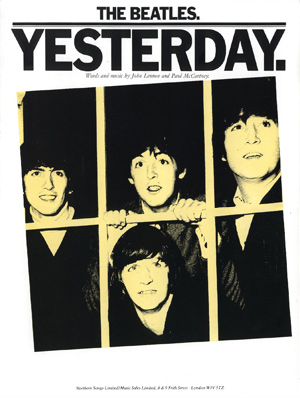 "It's funny, the myth developed that I was the melodic, soft one and John was the hard, acerbic one. There was some surface truth to that." This Paul McCartney quote emphasizes the perception that the majority of Beatles' fans hold even to this day. The "surface truth" was that Paul composed all of the ballads for The Beatles. After all, "Michelle," "Here, There And Everywhere," "I Will," "The Long And Winding Road," "I'll Follow The Sun" and the monumentally successful "Yesterday" were all written primarily, if not totally, by Paul McCartney. One can easily point out John's "In My Life" or George's "Something" as examples otherwise, but Paul is definitely the winner in the "ballads" sweepstakes. "It's funny, the myth developed that I was the melodic, soft one and John was the hard, acerbic one. There was some surface truth to that." This Paul McCartney quote emphasizes the perception that the majority of Beatles' fans hold even to this day. The "surface truth" was that Paul composed all of the ballads for The Beatles. After all, "Michelle," "Here, There And Everywhere," "I Will," "The Long And Winding Road," "I'll Follow The Sun" and the monumentally successful "Yesterday" were all written primarily, if not totally, by Paul McCartney. One can easily point out John's "In My Life" or George's "Something" as examples otherwise, but Paul is definitely the winner in the "ballads" sweepstakes.
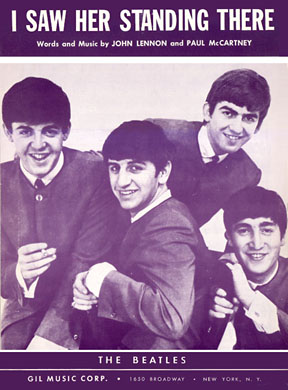 Before the soundtrack LP for their movie "A Hard Day's Night" burst onto the scene, McCartney's compositions were mostly confied to writing "eyeball to eyeball" (as Lennon would call it) with John in collaborative efforts. When he did faction off to write by himself, the songs would usually be rockers, such as "I Saw Her Standing There" and "Can't Buy Me Love." His reputation as a "balladeer" started off with the inclusion of "And I Love Her" on the movie soundtrack album. This soft, acoustic sentimental love song proceeded to stick out like a sore thumb, making everyone take notice of what this long-haired British rock group was capable of. Before the soundtrack LP for their movie "A Hard Day's Night" burst onto the scene, McCartney's compositions were mostly confied to writing "eyeball to eyeball" (as Lennon would call it) with John in collaborative efforts. When he did faction off to write by himself, the songs would usually be rockers, such as "I Saw Her Standing There" and "Can't Buy Me Love." His reputation as a "balladeer" started off with the inclusion of "And I Love Her" on the movie soundtrack album. This soft, acoustic sentimental love song proceeded to stick out like a sore thumb, making everyone take notice of what this long-haired British rock group was capable of.
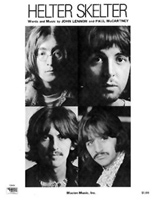 Since the movie "A Hard Day's Night" individualized the characteristics of each Beatle in the viewer's minds ("the cute one," "the witty one," "the quiet one" etc.), fans were prone to easily identify Paul as the "melodic, soft one" of the band. While history has shown this characterization to be inaccurate, evidenced numerous times throughout their career (McCartney's "Helter Skelter" being an obvious example), the fact still remains that Paul was very much a true master of the "ballad." Since the movie "A Hard Day's Night" individualized the characteristics of each Beatle in the viewer's minds ("the cute one," "the witty one," "the quiet one" etc.), fans were prone to easily identify Paul as the "melodic, soft one" of the band. While history has shown this characterization to be inaccurate, evidenced numerous times throughout their career (McCartney's "Helter Skelter" being an obvious example), the fact still remains that Paul was very much a true master of the "ballad."
Songwriting History
Although the romantic relationship between Paul and actress Jane Asher didn’t end up in nuptials as the rumor mill would have had us believe throughout the '60s, their relationship did spawn a good many songs in the Lennon / McCartney catalog. The first of such songs was “And I Love Her,” which was written about ten months after they had met.
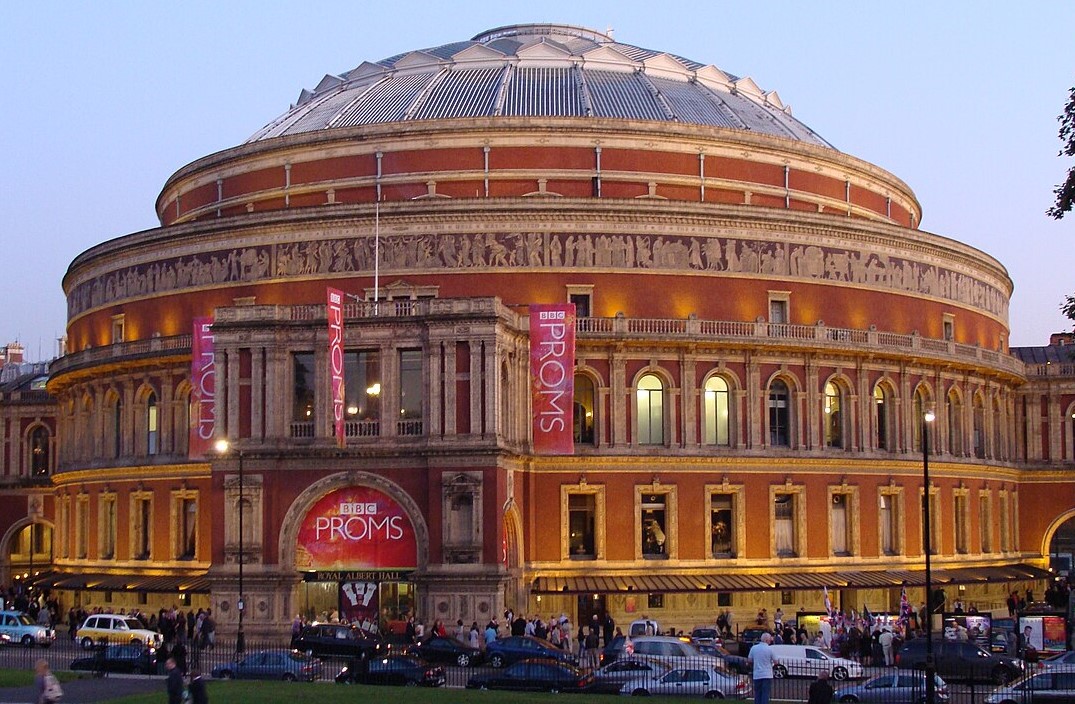 The BBC magazine “Radio Times” dispatched 17 year old Jane Asher as their “best-known teenage girl” to report on the group's April 18th, 1963 concert at the Royal Albert Hall which was being recorded for BBC radio. Jane Asher was very popular in Britain at the time due to her appearance in many plays, films and television shows, such as being a regular on the pop music TV program “Juke Box Jury.” When the Radio Times article was released on May 2nd, 1963, it featured a posed picture of Jane Asher screaming in excitement for The Beatles, her quote being, "Now, these I could scream for." She met the group for an interview backstage after the performance and then ended up with them at the Royal Court Hotel in Chelsea afterward. "I remember we were all surprised by her red hair, because we'd only ever seen her in black and white before," Paul explains in his 2021 book "The Lyrics." All four Beatles tried to impress this young actress who they recognized from “Juke Box Jury,” but she ended up with Paul in the end. The BBC magazine “Radio Times” dispatched 17 year old Jane Asher as their “best-known teenage girl” to report on the group's April 18th, 1963 concert at the Royal Albert Hall which was being recorded for BBC radio. Jane Asher was very popular in Britain at the time due to her appearance in many plays, films and television shows, such as being a regular on the pop music TV program “Juke Box Jury.” When the Radio Times article was released on May 2nd, 1963, it featured a posed picture of Jane Asher screaming in excitement for The Beatles, her quote being, "Now, these I could scream for." She met the group for an interview backstage after the performance and then ended up with them at the Royal Court Hotel in Chelsea afterward. "I remember we were all surprised by her red hair, because we'd only ever seen her in black and white before," Paul explains in his 2021 book "The Lyrics." All four Beatles tried to impress this young actress who they recognized from “Juke Box Jury,” but she ended up with Paul in the end.
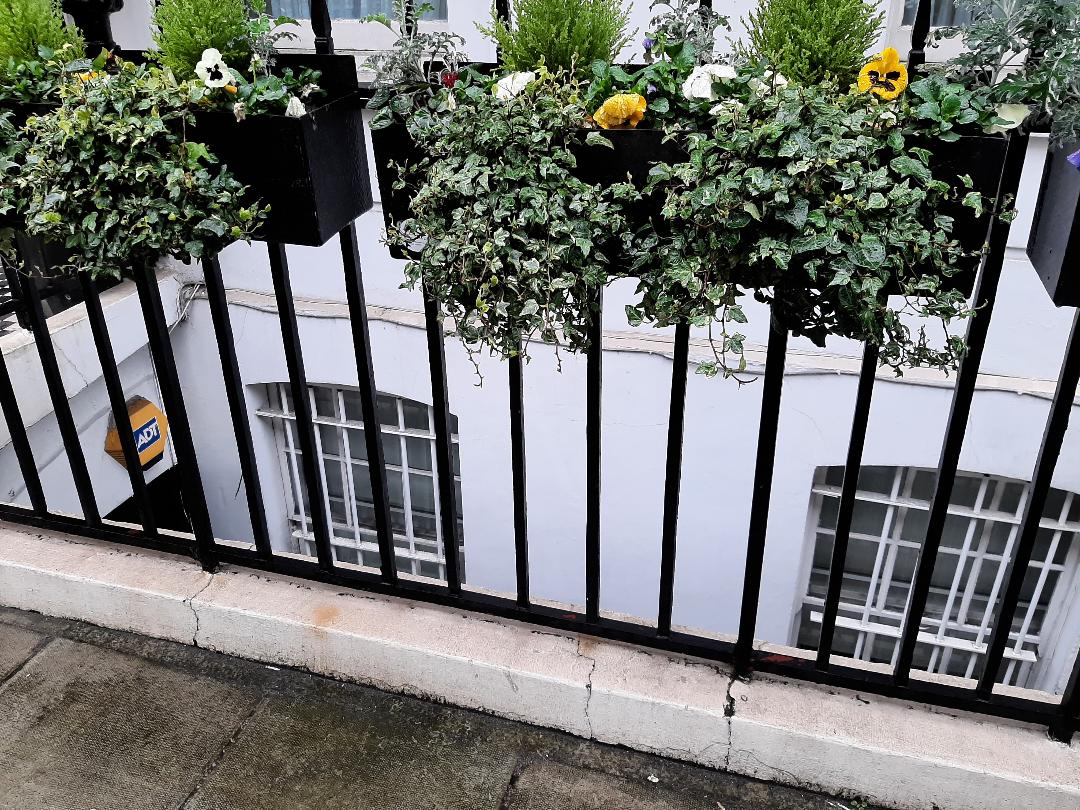 "And I Love Her" was written in the basement music room at Jane Asher's parents home at 57 Wimpole St. in London. Paul had moved in with the Ashers sometime during November of 1963 upon Jane Asher's parents request. "This gesture was in the long tradition of giving a garret room to a starving artist," Paul relates in his book "The Lyrics," "so I had a little room up at the top right next to Jane's brother Peter (Asher)'s room." Paul frequently met with John in the Asher home to compose songs, although "And I Love Her" was apparently written by McCartney alone, at least initially. "I wrote this on my own," McCartney stated, "I can actually see Margaret Asher's upstairs drawing room. I remember playing it there." "And I Love Her" was written in the basement music room at Jane Asher's parents home at 57 Wimpole St. in London. Paul had moved in with the Ashers sometime during November of 1963 upon Jane Asher's parents request. "This gesture was in the long tradition of giving a garret room to a starving artist," Paul relates in his book "The Lyrics," "so I had a little room up at the top right next to Jane's brother Peter (Asher)'s room." Paul frequently met with John in the Asher home to compose songs, although "And I Love Her" was apparently written by McCartney alone, at least initially. "I wrote this on my own," McCartney stated, "I can actually see Margaret Asher's upstairs drawing room. I remember playing it there."
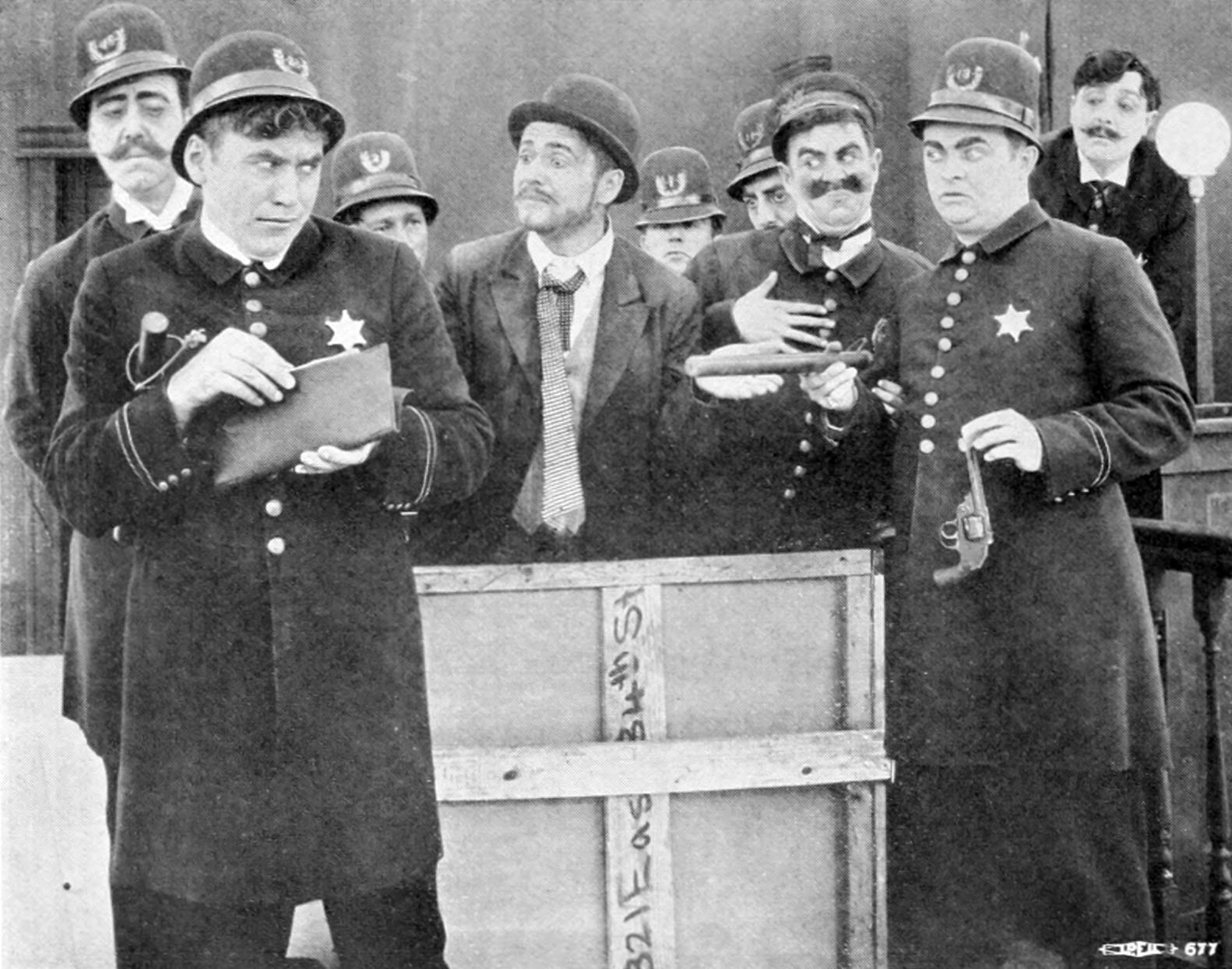 While Paul proclaimed in 1984 "It's just a love song, it wasn't for anyone," his specific detail as contained in his 2021 book "The Lyrics" tells otherwise. "We were in a theatre one night and we were sitting there, and the lights went up for the interval. We had decided not to go to the bar, so we were just going to sit it out. So we both were just talking in our seats, and suddenly ten paparazzi came scampering in with their cameras going flash, flash, flash, like La Dolce Vita, and then, just as quickly, they all just scampered out again. They were like The Keystone Cops. But, oh my God, we were shocked. The theatre had probably tipped them off, to get a bit of publicity for the play. But precisely because Jane was my girlfriend, I wanted to tell her there that I loved her, so that's what initially inspired this song; that's what it was...So, I was very proud of that. It was very satisfying to make that record and to have written that song for Jane." While Paul proclaimed in 1984 "It's just a love song, it wasn't for anyone," his specific detail as contained in his 2021 book "The Lyrics" tells otherwise. "We were in a theatre one night and we were sitting there, and the lights went up for the interval. We had decided not to go to the bar, so we were just going to sit it out. So we both were just talking in our seats, and suddenly ten paparazzi came scampering in with their cameras going flash, flash, flash, like La Dolce Vita, and then, just as quickly, they all just scampered out again. They were like The Keystone Cops. But, oh my God, we were shocked. The theatre had probably tipped them off, to get a bit of publicity for the play. But precisely because Jane was my girlfriend, I wanted to tell her there that I loved her, so that's what initially inspired this song; that's what it was...So, I was very proud of that. It was very satisfying to make that record and to have written that song for Jane."
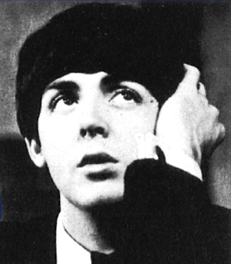 The song was composed in February of 1964 during either the group's two days at home between their Paris and America trips (February 5th through 7th), or after their return trip home from conquering the US (February 22nd through 25th). These were the only dates that Paul could have been at the Ashers' home in London during February. The song was composed in February of 1964 during either the group's two days at home between their Paris and America trips (February 5th through 7th), or after their return trip home from conquering the US (February 22nd through 25th). These were the only dates that Paul could have been at the Ashers' home in London during February.
 "It was the first ballad I impressed myself with," McCartney explained in his book 'Many Years From Now.' "It's got nice chords in it, 'Bright are the stars that shine, dark is the sky...' I like the imagery of the stars and the sky. It was a love song really. The 'And' in the title was an important thing, 'And I Love Her', which came right out of left field, you were right up to speed the minute you heard it. The title comes in the second verse and it doesn't repeat. You would often go to town on a title, but this was almost an aside, 'Oh...and I love you.' It still holds up and George played really good guitar on it. It worked very well." "It was the first ballad I impressed myself with," McCartney explained in his book 'Many Years From Now.' "It's got nice chords in it, 'Bright are the stars that shine, dark is the sky...' I like the imagery of the stars and the sky. It was a love song really. The 'And' in the title was an important thing, 'And I Love Her', which came right out of left field, you were right up to speed the minute you heard it. The title comes in the second verse and it doesn't repeat. You would often go to town on a title, but this was almost an aside, 'Oh...and I love you.' It still holds up and George played really good guitar on it. It worked very well."
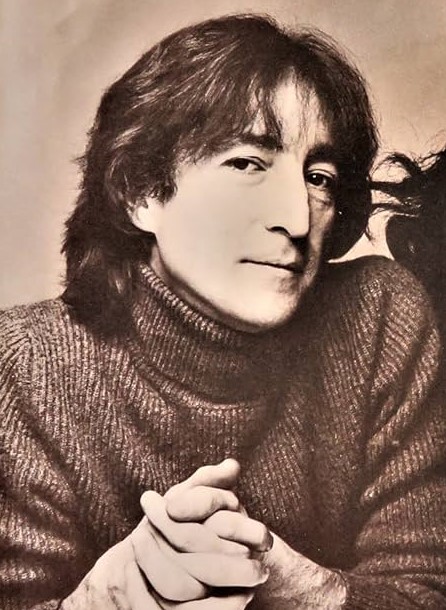 Lennon equally admired the song, stating in 1980 "I consider it (Paul's) first 'Yesterday.' You know, the big ballad in 'A Hard Day's Night.'" One thing about John's explanatory interviews is that his memory seems to slip depending on the year he was being interviewed. At one point Lennon even claimed to have completely written Paul's "Two Of Us." In the case of "And I Love Her," he stated in 1972, "Both of us wrote it. The first half was Paul's and the middle-eight (or bridge) is mine." In 1980, he changed his story slightly, saying "The middle eight, I helped with that." Lennon equally admired the song, stating in 1980 "I consider it (Paul's) first 'Yesterday.' You know, the big ballad in 'A Hard Day's Night.'" One thing about John's explanatory interviews is that his memory seems to slip depending on the year he was being interviewed. At one point Lennon even claimed to have completely written Paul's "Two Of Us." In the case of "And I Love Her," he stated in 1972, "Both of us wrote it. The first half was Paul's and the middle-eight (or bridge) is mine." In 1980, he changed his story slightly, saying "The middle eight, I helped with that."
Paul purges his memory to clarify the matter. "I'm not sure if John worked on that at all...The middle eight is mine. I would say that John probably helped with the middle-eight, but he can't say 'It's mine.' I wrote this on my own."
 One thing that helps to put this to rest is a quote from their music publisher Dick James, who just happened to be there during one of The Beatles' earlier attempts at recording this song. "They were laying down tracks and doing the melody lines of the song 'And I Love Her.' It was a very simple song and quite repetitive. George Martin and I looked at each other and the same thought sparked off in both our minds. It was proving to be, although plain and a warm and sympathetic song, just too repetitive with the same phrase repeating. George Martin told the boys, 'Both Dick and I feel that the song is just lacking in the middle. It's too repetitive and it needs something to break it up.'" One thing that helps to put this to rest is a quote from their music publisher Dick James, who just happened to be there during one of The Beatles' earlier attempts at recording this song. "They were laying down tracks and doing the melody lines of the song 'And I Love Her.' It was a very simple song and quite repetitive. George Martin and I looked at each other and the same thought sparked off in both our minds. It was proving to be, although plain and a warm and sympathetic song, just too repetitive with the same phrase repeating. George Martin told the boys, 'Both Dick and I feel that the song is just lacking in the middle. It's too repetitive and it needs something to break it up.'"
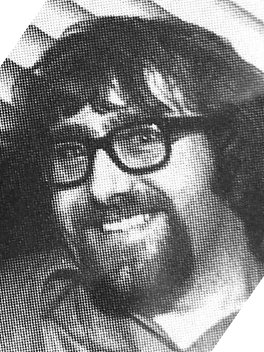 Dick James continues: "I think it was John who shouted, 'OK, let's have a tea break' and John and Paul went to the piano and, while Mal Evans was getting them some tea and sandwiches, the boys worked at the piano. Within half an hour they composed, right there before our very eyes, a very constructive middle (bridge) for a very commercial song. Although we know it wasn't long, it's only a four-bar middle, nevertheless it was the right ingredient to break up the over-repetitive effect of the original melody." Dick James continues: "I think it was John who shouted, 'OK, let's have a tea break' and John and Paul went to the piano and, while Mal Evans was getting them some tea and sandwiches, the boys worked at the piano. Within half an hour they composed, right there before our very eyes, a very constructive middle (bridge) for a very commercial song. Although we know it wasn't long, it's only a four-bar middle, nevertheless it was the right ingredient to break up the over-repetitive effect of the original melody."
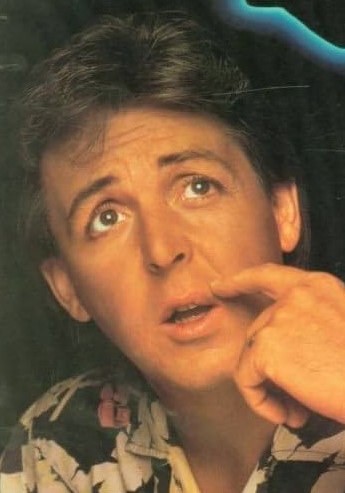 McCartney remained quite proud of "And I Love Her" through the years. "Having the title start in mid-sentence, I thought that was clever...it was a nice tune, that one. I still like it...Listening to it so many years later, I do think it's a nice melody. It starts with F-sharp minor, not with the root chord of E Major, and you gradually work your way back. When I'd finished it, I felt, almost immediately, proud of it. I thought, 'This is a good 'un.'" McCartney remained quite proud of "And I Love Her" through the years. "Having the title start in mid-sentence, I thought that was clever...it was a nice tune, that one. I still like it...Listening to it so many years later, I do think it's a nice melody. It starts with F-sharp minor, not with the root chord of E Major, and you gradually work your way back. When I'd finished it, I felt, almost immediately, proud of it. I thought, 'This is a good 'un.'"
Recording History
 The first day that The Beatles began recording tracks for their upcoming first motion picture was February 25th, 1964. Two sessions were booked in EMI Studio Two for this day, the first of which finished off “Can’t Buy Me Love” and its b-side “You Can’t Do That.” The later session, from 2:30 to 5:30 pm, bore no real fruit except for the introduction of two new songs that would eventually be used in the movie; “I Should Have Known Better” and “And I Love Her.” The first day that The Beatles began recording tracks for their upcoming first motion picture was February 25th, 1964. Two sessions were booked in EMI Studio Two for this day, the first of which finished off “Can’t Buy Me Love” and its b-side “You Can’t Do That.” The later session, from 2:30 to 5:30 pm, bore no real fruit except for the introduction of two new songs that would eventually be used in the movie; “I Should Have Known Better” and “And I Love Her.”
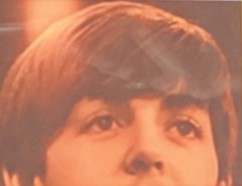 Two takes of “And I Love Her” were attempted on this day, only one of which made it through to completion. The song was much different from what we’ve come to know, being that they envisioned it in their usual guitar/ bass/ drums format. Although considering it finished at that time, it did not contain the bridge, only verses and a guitar solo section before the last verse. They didn't even have a suitable ending worked out at this point. Two takes of “And I Love Her” were attempted on this day, only one of which made it through to completion. The song was much different from what we’ve come to know, being that they envisioned it in their usual guitar/ bass/ drums format. Although considering it finished at that time, it did not contain the bridge, only verses and a guitar solo section before the last verse. They didn't even have a suitable ending worked out at this point.
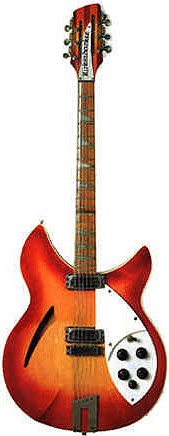 This song had been developed to a certain degree, though, as it contained George Harrison’s plucking guitar runs in most of the verses (played on his new Rickenbacker 12-string), as well as the key modulation for the solo section as we’re used to hearing in the final version. In his 2021 book "The Lyrics," Paul relates: "George Martin was inspired to add a chord modulation in the solo of the song, a key change that he knew would be musically very satisfying; we shifted the chord progression to start with G minor instead of F-sharp minor, so up a semitone. I think George Martin's classical training told him that that would be a really interesing change. And it is. And this sort of help is what started to make The Beatles' stuff better than that of other songwriters." The guitar solo in this early version of the song was identical to the finished version at this stage, however clumsily played, following the melody line of the verses. They probably felt that they could keep working out the arrangement in the studio like they did with other songs, but they apparently thought it just wasn’t feeling right and left it for the next day. This song had been developed to a certain degree, though, as it contained George Harrison’s plucking guitar runs in most of the verses (played on his new Rickenbacker 12-string), as well as the key modulation for the solo section as we’re used to hearing in the final version. In his 2021 book "The Lyrics," Paul relates: "George Martin was inspired to add a chord modulation in the solo of the song, a key change that he knew would be musically very satisfying; we shifted the chord progression to start with G minor instead of F-sharp minor, so up a semitone. I think George Martin's classical training told him that that would be a really interesing change. And it is. And this sort of help is what started to make The Beatles' stuff better than that of other songwriters." The guitar solo in this early version of the song was identical to the finished version at this stage, however clumsily played, following the melody line of the verses. They probably felt that they could keep working out the arrangement in the studio like they did with other songs, but they apparently thought it just wasn’t feeling right and left it for the next day.
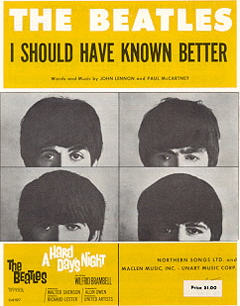 That next day, February 26th, witnessed The Beatles back in EMI Studio Two from 2:30 to 5:30 pm to work on the two songs left over from the previous session. “I Should Have Known Better” got completed, but “And I Love Her” still wasn’t good enough. They recorded another 17 takes, "take three" through "take 19," which saw the song evolving into what later became the final arrangement. Midway through this session, Ringo switched to playing bongos instead of his drums. It was during this recording session, apparently, that John and Paul wrote the bridge (as related above in the quote from Dick James), which added a new dynamic to the arrangement and took the song’s length to over two minutes for the first time. That next day, February 26th, witnessed The Beatles back in EMI Studio Two from 2:30 to 5:30 pm to work on the two songs left over from the previous session. “I Should Have Known Better” got completed, but “And I Love Her” still wasn’t good enough. They recorded another 17 takes, "take three" through "take 19," which saw the song evolving into what later became the final arrangement. Midway through this session, Ringo switched to playing bongos instead of his drums. It was during this recording session, apparently, that John and Paul wrote the bridge (as related above in the quote from Dick James), which added a new dynamic to the arrangement and took the song’s length to over two minutes for the first time.
 The group's struggles on this day solidified the shape the song would eventually take, but they still weren’t satisfied with it. When engineer Norman Smith announced “Take 14,” Paul quipped “Ha, take 50!” indicating the frustration they all were experiencing. Once again, they decided to leave it for the next day. The group's struggles on this day solidified the shape the song would eventually take, but they still weren’t satisfied with it. When engineer Norman Smith announced “Take 14,” Paul quipped “Ha, take 50!” indicating the frustration they all were experiencing. Once again, they decided to leave it for the next day.
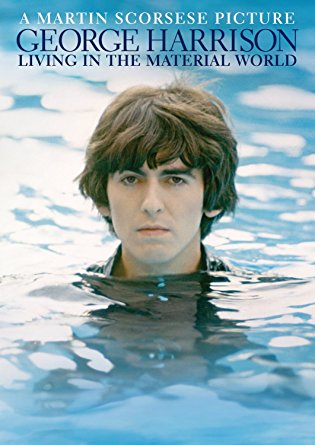 The band entered EMI Studio Two the following day (February 17th, 1964) to finally complete the track. In Martin Scorsese’s movie “George Harrison: Living In The Material World,” McCartney explains a bit of detail as to the band's arrangement procedures during their early '60s recording sessions and, in the process, reveals an interesting detail concerning their recording of “And I Love Her.”: The band entered EMI Studio Two the following day (February 17th, 1964) to finally complete the track. In Martin Scorsese’s movie “George Harrison: Living In The Material World,” McCartney explains a bit of detail as to the band's arrangement procedures during their early '60s recording sessions and, in the process, reveals an interesting detail concerning their recording of “And I Love Her.”:
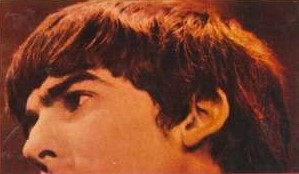 “We’d go in the studio, ten in the morning, and this was the first time George and Ringo had heard any of the songs. This is how good they were. So John and I would go, ‘It goes like this...’ and they’d go, ‘uh, huh’ and George would cop the chords but not writing them down. It’s just like ‘yeah, right…I can see what you’re doing, ‘cause I’m one of you, you know, I didn’t write it but I see what you did.’ And Ringo would just stand around with his sticks and just ‘tick-a-tic-tic,’ do a little thing.” “We’d go in the studio, ten in the morning, and this was the first time George and Ringo had heard any of the songs. This is how good they were. So John and I would go, ‘It goes like this...’ and they’d go, ‘uh, huh’ and George would cop the chords but not writing them down. It’s just like ‘yeah, right…I can see what you’re doing, ‘cause I’m one of you, you know, I didn’t write it but I see what you did.’ And Ringo would just stand around with his sticks and just ‘tick-a-tic-tic,’ do a little thing.”
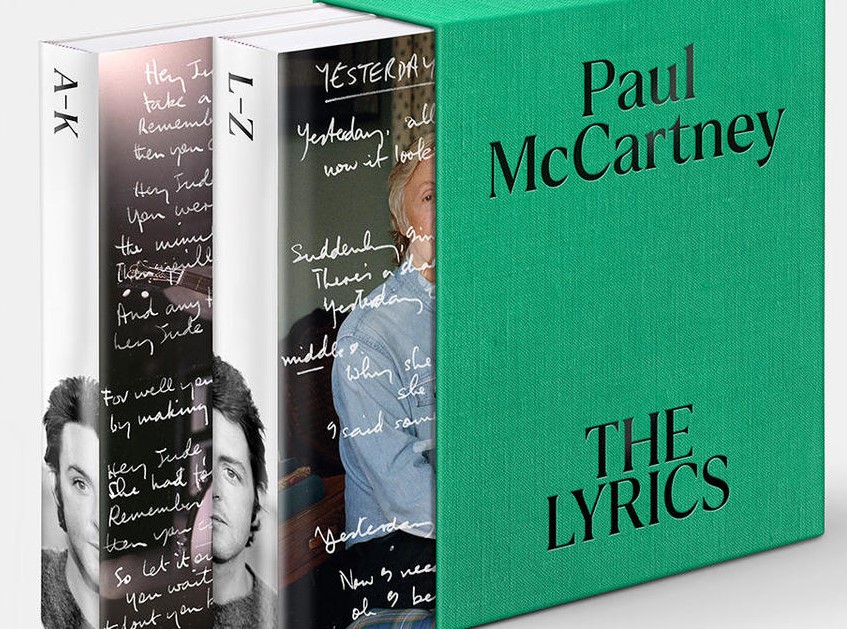 "And I was recently thinking actually about my song, ‘And I Love Her.’ ‘I give her all my love,’ I had that. But then George comes in with, 'doo-doo-doo-doo.' Now you think about that – THAT’s the song! But you know, he made that up on this session, ‘cause he nicked the chords and we just said, ‘it needs a riff.’ I didn’t write that!" In his 2021 book set "The Lyrics," Paul remembers: "We were about to record it, and (George Martin) said, 'I think it would be good with an introduction.' And I swear, right there and then, George Harrison went, 'Well how about this?' and he played the opening riff, which is such a hook; the song is nothing without it. We were working very fast and spontaneously coming up with ideas...In the case of this song, the two Georges - George Harrison with the intro and then George Martin on the key change into the solo - gave it a little more musical strength. We were saying to people, 'We're a little bit more musical than the average bear.' And then, of course, this song, which is now in (the key of) F major, or arguably D minor, eventually finishes on that bright D major chord, a lovely, pleasing resolution. So, I was very proud of that.” "And I was recently thinking actually about my song, ‘And I Love Her.’ ‘I give her all my love,’ I had that. But then George comes in with, 'doo-doo-doo-doo.' Now you think about that – THAT’s the song! But you know, he made that up on this session, ‘cause he nicked the chords and we just said, ‘it needs a riff.’ I didn’t write that!" In his 2021 book set "The Lyrics," Paul remembers: "We were about to record it, and (George Martin) said, 'I think it would be good with an introduction.' And I swear, right there and then, George Harrison went, 'Well how about this?' and he played the opening riff, which is such a hook; the song is nothing without it. We were working very fast and spontaneously coming up with ideas...In the case of this song, the two Georges - George Harrison with the intro and then George Martin on the key change into the solo - gave it a little more musical strength. We were saying to people, 'We're a little bit more musical than the average bear.' And then, of course, this song, which is now in (the key of) F major, or arguably D minor, eventually finishes on that bright D major chord, a lovely, pleasing resolution. So, I was very proud of that.”
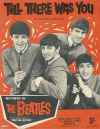 With the song’s signature riff in place, only two takes were needed during the first session booked for this day (10 am to 1 pm) to finish it off, this time with a completely acoustic arrangement. Harrison skillfully played his parts on his Jose Ramirez acoustic guitar (as he used on his excellent solo in “Till There Was You” the year prior) while Ringo remained on bongos. The second take at this session ("take 21") was deemed the best, which then required two overdubs; the first to double-track Paul’s vocals and the second for the claves (percussive wooden sticks) overdub, which presumably was played by Ringo although some claim George may have played them. By approximately 11 am, this three day project was finally completed. With the song’s signature riff in place, only two takes were needed during the first session booked for this day (10 am to 1 pm) to finish it off, this time with a completely acoustic arrangement. Harrison skillfully played his parts on his Jose Ramirez acoustic guitar (as he used on his excellent solo in “Till There Was You” the year prior) while Ringo remained on bongos. The second take at this session ("take 21") was deemed the best, which then required two overdubs; the first to double-track Paul’s vocals and the second for the claves (percussive wooden sticks) overdub, which presumably was played by Ringo although some claim George may have played them. By approximately 11 am, this three day project was finally completed.
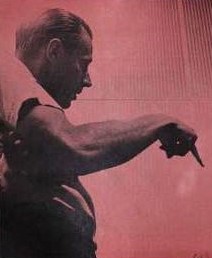 The mono mix of the song was made on March 3rd, 1964 in the control room of EMI Studio One by producer George Martin and engineers Norman Smith and A.B. Lincoln. As well as being used for the mono releases of the song in the US, it was shipped to United Artists Pictures for use during the making of their movie “A Hard Day’s Night.” The EMI staff took care to utilize McCartney’s double-tracked vocals only in strategic places, which in this case was only when he sang the title of the song and during the bridge. The mono mix of the song was made on March 3rd, 1964 in the control room of EMI Studio One by producer George Martin and engineers Norman Smith and A.B. Lincoln. As well as being used for the mono releases of the song in the US, it was shipped to United Artists Pictures for use during the making of their movie “A Hard Day’s Night.” The EMI staff took care to utilize McCartney’s double-tracked vocals only in strategic places, which in this case was only when he sang the title of the song and during the bridge.
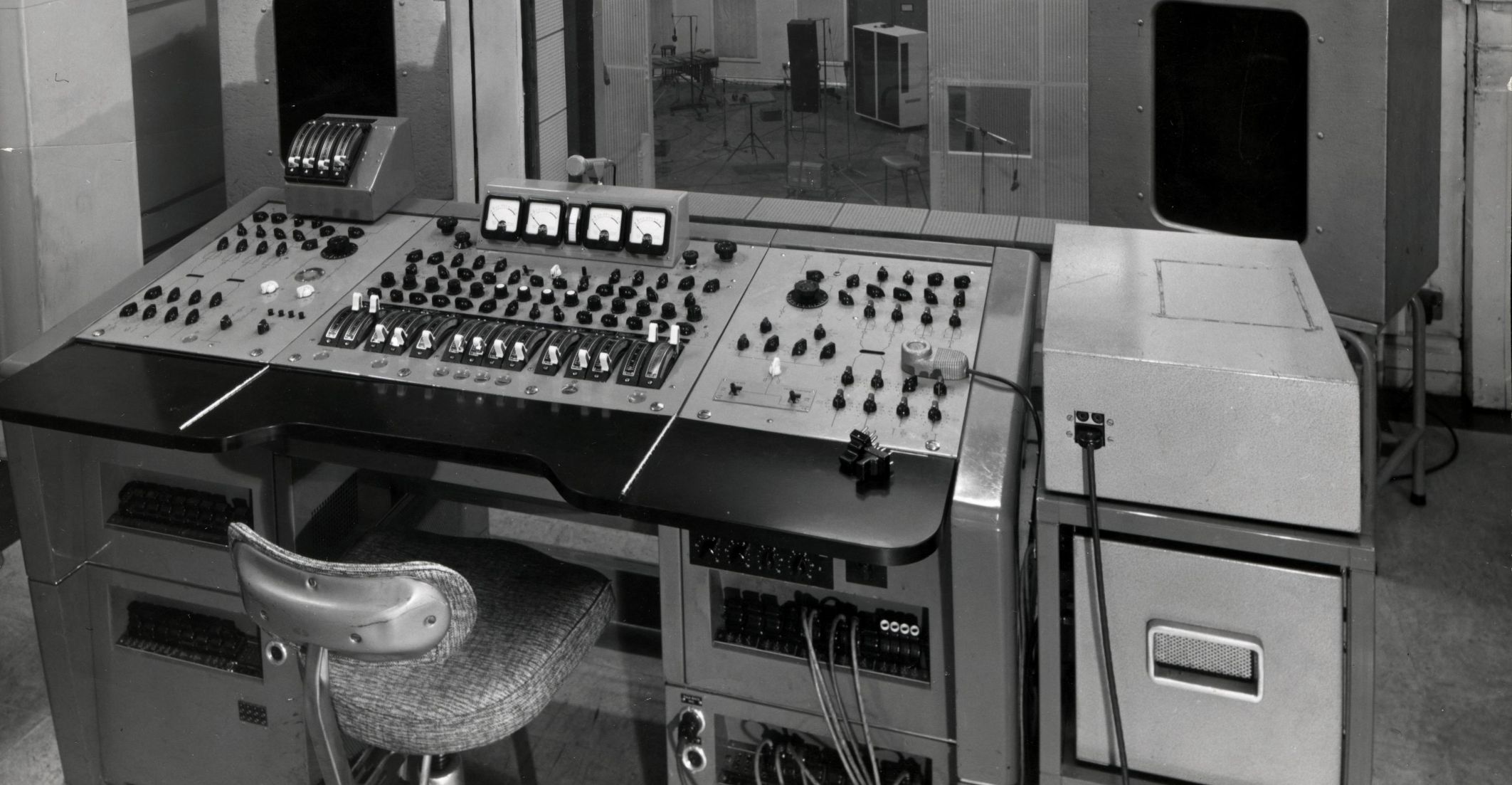 Work was also done on the song on June 9th, 1964 in the EMI Studio Three control room. Mono tape copies were created of all the movie soundtrack songs to distribute to both American record labels that would be releasing the songs, these being Capitol Records and United Artists Records. This all was done by George Martin and engineers Norman Smith and Ken Scott. Work was also done on the song on June 9th, 1964 in the EMI Studio Three control room. Mono tape copies were created of all the movie soundtrack songs to distribute to both American record labels that would be releasing the songs, these being Capitol Records and United Artists Records. This all was done by George Martin and engineers Norman Smith and Ken Scott.
 June 22nd, 1964 witnessed a marathon mixing session for the “A Hard Day’s Night” album, creating all the stereo mixes of the songs as well as many mono mixes not done yet. Two mixes of “And I Love Her” were made on this day; a mono mix for the British album and a stereo mix for general release everywhere, both of these having McCartney's vocals double tracked throughout except for the lines “bright are the stars that shine, dark is the sky” in the third verse, where he apparently didn’t double-track his vocals. This mixing session was attended only by George Martin, Norman Smith and 2nd engineer Geoff Emerick. June 22nd, 1964 witnessed a marathon mixing session for the “A Hard Day’s Night” album, creating all the stereo mixes of the songs as well as many mono mixes not done yet. Two mixes of “And I Love Her” were made on this day; a mono mix for the British album and a stereo mix for general release everywhere, both of these having McCartney's vocals double tracked throughout except for the lines “bright are the stars that shine, dark is the sky” in the third verse, where he apparently didn’t double-track his vocals. This mixing session was attended only by George Martin, Norman Smith and 2nd engineer Geoff Emerick.
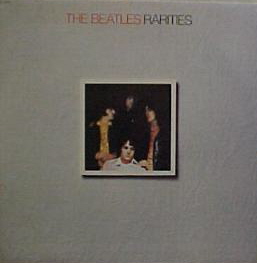 A note should be made concerning a bit of controversy regarding the German version of the album “ Something New ” that contains a stereo version of the song with six guitar riffs at the end instead of four as contained in all other releases of this song. No other stereo mix had been made, so therefore an editing job must have been done for some unknown reason to artificially extend the song for this release. The guitar playing does appear a little softer on the left channel, but the centered vocals are a little more to the right of the mix, which indicates that the balance was off a little and not that there was a different mix sent to Germany. This version did get released in the US on the 1980 album "Rarities." A note should be made concerning a bit of controversy regarding the German version of the album “ Something New ” that contains a stereo version of the song with six guitar riffs at the end instead of four as contained in all other releases of this song. No other stereo mix had been made, so therefore an editing job must have been done for some unknown reason to artificially extend the song for this release. The guitar playing does appear a little softer on the left channel, but the centered vocals are a little more to the right of the mix, which indicates that the balance was off a little and not that there was a different mix sent to Germany. This version did get released in the US on the 1980 album "Rarities."
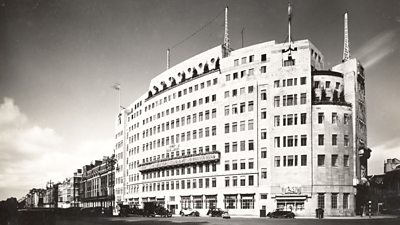 The Beatles made one more recording of "And I Love Her," this being made specifically for BBC radio. They recorded the song on July 14th, 1964 in Studios B7/S2 of Broadcasting House in London between 7 and 11 pm for a new radio show entitled "Top Gear," which was produced by Bernie Andrews and broadcast on July 16th between 10 and 11:55 pm. The Beatles made one more recording of "And I Love Her," this being made specifically for BBC radio. They recorded the song on July 14th, 1964 in Studios B7/S2 of Broadcasting House in London between 7 and 11 pm for a new radio show entitled "Top Gear," which was produced by Bernie Andrews and broadcast on July 16th between 10 and 11:55 pm.
 Sometime during 2023, Giles Martin was given the task of creating a "demix remix" of "And I Love Her" for inclusion as a new track on the new 50th Anniversary edition of the compilation album "The Beatles / 1962 - 1966" (aka "The Red Album"). With Peter Jackson's AI technology at his disposal, Giles Martin was able to use this "new machine-learning techology" so that "individual elements that were put to tape and were therefore impossible to separate" could now be "untangled, allowing Giles (Martin) to put the original recordings back together with even greater clarity and impact," as stated by John Harris in the liner notes of the above mentioned album. Since Peter Jackson then chose the original stereo mix of "And I Love Her" to apply AI, Paul's double-tracked vocals appear throughout in this new mix. The seperation of Lennon's rhythm guitar in the left channel and George's lead guitar in the right channel makes this arguably the best stereo mix of the song. Sometime during 2023, Giles Martin was given the task of creating a "demix remix" of "And I Love Her" for inclusion as a new track on the new 50th Anniversary edition of the compilation album "The Beatles / 1962 - 1966" (aka "The Red Album"). With Peter Jackson's AI technology at his disposal, Giles Martin was able to use this "new machine-learning techology" so that "individual elements that were put to tape and were therefore impossible to separate" could now be "untangled, allowing Giles (Martin) to put the original recordings back together with even greater clarity and impact," as stated by John Harris in the liner notes of the above mentioned album. Since Peter Jackson then chose the original stereo mix of "And I Love Her" to apply AI, Paul's double-tracked vocals appear throughout in this new mix. The seperation of Lennon's rhythm guitar in the left channel and George's lead guitar in the right channel makes this arguably the best stereo mix of the song.
 Not to be forgotten here is Paul McCartney's live recording of "And I Love Her" on January 25th, 1991, this being performed during his MTV Unplugged episode and later released on his “Unplugged (The Official Bootleg)” album. Not to be forgotten here is Paul McCartney's live recording of "And I Love Her" on January 25th, 1991, this being performed during his MTV Unplugged episode and later released on his “Unplugged (The Official Bootleg)” album.
Song Structure and Style
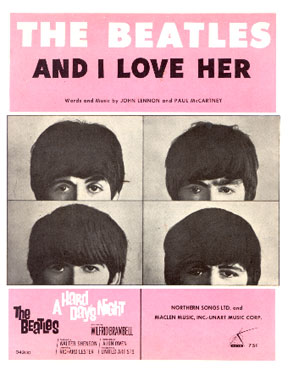 "And I Love Her" appears to fall into the usual Beatle structure of verses and bridges, which was common for this early time period in their songwriting career. But as we've seen by examining their catalog, idiosyncrasies rule the day. One difference here is that the bridge only appears once whereas, when we expect it again after a third verse, a guitar solo is heard but in a raised key. So we witness here a 'verse/ verse/ bridge/ verse' (or aaba) format with an instrumental section and a closing verse added in. "And I Love Her" appears to fall into the usual Beatle structure of verses and bridges, which was common for this early time period in their songwriting career. But as we've seen by examining their catalog, idiosyncrasies rule the day. One difference here is that the bridge only appears once whereas, when we expect it again after a third verse, a guitar solo is heard but in a raised key. So we witness here a 'verse/ verse/ bridge/ verse' (or aaba) format with an instrumental section and a closing verse added in.
 We start out, however, with a four measure introduction that nicely premiers the sparse acoustic arrangement of the song. Harrison's gentle Jose Rameriz Spanish Guitar runs segue appropriately into the first ten-measure verse which, as does the rest of the song, accentuates the very intimate solo vocal performance of McCartney. The second verse follows which mimics the first in structure and instrumentation except for George's delicate arpeggio that adds a degree of elegance to the arrangement. Because the first verse concludes with the simple phrase "I love her," this second verse is the first time we hear the title of the song "And I love her." We start out, however, with a four measure introduction that nicely premiers the sparse acoustic arrangement of the song. Harrison's gentle Jose Rameriz Spanish Guitar runs segue appropriately into the first ten-measure verse which, as does the rest of the song, accentuates the very intimate solo vocal performance of McCartney. The second verse follows which mimics the first in structure and instrumentation except for George's delicate arpeggio that adds a degree of elegance to the arrangement. Because the first verse concludes with the simple phrase "I love her," this second verse is the first time we hear the title of the song "And I love her."
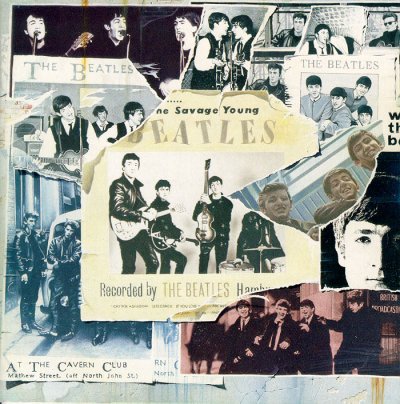 The eight-measure bridge (that Dick James called a "four-bar middle") now appears for the only time in the song, adding a beautiful variance that breaks up what would have become monotony, as witnessed in the earlier "Anthology 1" version taped two days before. Harrison adds even more variance by accentuating the one-beat of each measure with a Spanish-like strum on his guitar before transitioning the bridge into a third verse with his signature guitar run. The eight-measure bridge (that Dick James called a "four-bar middle") now appears for the only time in the song, adding a beautiful variance that breaks up what would have become monotony, as witnessed in the earlier "Anthology 1" version taped two days before. Harrison adds even more variance by accentuating the one-beat of each measure with a Spanish-like strum on his guitar before transitioning the bridge into a third verse with his signature guitar run.
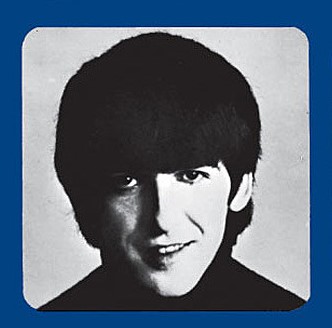 After a third identically structured verse, which features the same delicate guitar arpeggio from the second verse (although beginning from the second measure to allow George to finish the introductory guitar run), the song takes a half-key shift upward for the guitar solo. This section is performed to the chord structure of the verse right down to the actual melody line played exquisitely on acoustic guitar. After a third identically structured verse, which features the same delicate guitar arpeggio from the second verse (although beginning from the second measure to allow George to finish the introductory guitar run), the song takes a half-key shift upward for the guitar solo. This section is performed to the chord structure of the verse right down to the actual melody line played exquisitely on acoustic guitar.
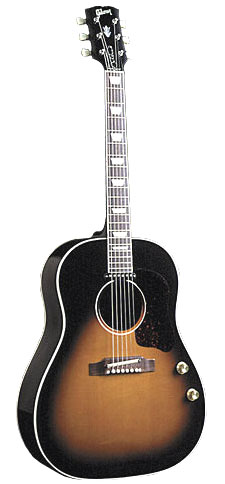 After a repeat of the final verse, which is identical except for the raised key, we now see the reappearance of the introduction, thus completing the cycle. This conclusion extends the concept of the introduction from four measures to six measures, ending with a Baroque-sounding twist; a resolve in a major key. This solidifies the question as to whether the song as a whole is in a major or minor key. Since all of the verses conclude in a major key when the title of the song is heard, as well as the song itself ending in a major key, the argument is settled. "And I Love Her" can be identified as being in a major key. That's my story and I'm sticking with it! After a repeat of the final verse, which is identical except for the raised key, we now see the reappearance of the introduction, thus completing the cycle. This conclusion extends the concept of the introduction from four measures to six measures, ending with a Baroque-sounding twist; a resolve in a major key. This solidifies the question as to whether the song as a whole is in a major or minor key. Since all of the verses conclude in a major key when the title of the song is heard, as well as the song itself ending in a major key, the argument is settled. "And I Love Her" can be identified as being in a major key. That's my story and I'm sticking with it!
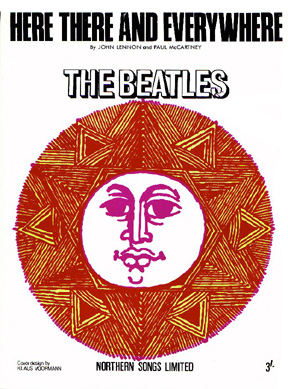 Lyrically the song can be described as "moon-in-June," or a little cliché for a love song. Keeping in mind that this was a jumping-off point for Paul McCartney into ballad writing, his intricate sensitivity, such as that seen in his 1966 masterpiece "Here, There And Everywhere," was yet to come. Lyrically the song can be described as "moon-in-June," or a little cliché for a love song. Keeping in mind that this was a jumping-off point for Paul McCartney into ballad writing, his intricate sensitivity, such as that seen in his 1966 masterpiece "Here, There And Everywhere," was yet to come.
The lyrical content was put together as if the female in question was not present, relating the singer's feelings to a third party (or to all of us). This was the case throughout, except for the later-written bridge which is sung directly to his girl, as evidenced in the line "as long as I have you near me." It can be assumed that this was unintentional, since the bridge was hastily composed in the studio and contained the only input from John Lennon in the writing of the song.
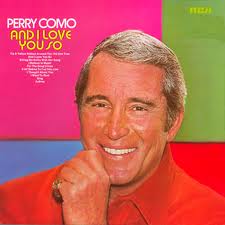 As stated earlier, Paul was quite proud of the simply stated lyrics in this song. He also was quick to notice when his idea for the title of the song was used elsewhere. "Having the title start mid-sentence, I thought that was clever," Paul mused in 1984. "Well, Perry Como did 'And I Love You So' many years later. Tried to nick the idea. I like that." As stated earlier, Paul was quite proud of the simply stated lyrics in this song. He also was quick to notice when his idea for the title of the song was used elsewhere. "Having the title start mid-sentence, I thought that was clever," Paul mused in 1984. "Well, Perry Como did 'And I Love You So' many years later. Tried to nick the idea. I like that."
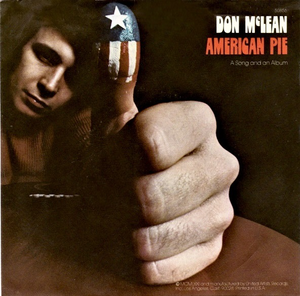 Little did Paul realize at that time, credit for 'nicking the idea' should go to Don McLean of "American Pie" fame who actually wrote this Perry Como song. Also of note, is John's 1966 composition "And Your Bird Can Sing," which also features a title that begins mid-sentence. Little did Paul realize at that time, credit for 'nicking the idea' should go to Don McLean of "American Pie" fame who actually wrote this Perry Como song. Also of note, is John's 1966 composition "And Your Bird Can Sing," which also features a title that begins mid-sentence.
Musicianship-wise, George gets the biggest nod for his simple-but-effective acoustic lead guitar work. After three days of practice in the studio, he came through well rehearsed and impressive, adding a classy touch to an intimate ballad.
 Paul deserves due credit for his melancholy vocals that come across with convincing sincerity. His bass performance, while simplistic in comparison to what he's recorded even up to this point, is suitable to the occasion and was played simultaneously with his spot-on vocal delivery. Paul deserves due credit for his melancholy vocals that come across with convincing sincerity. His bass performance, while simplistic in comparison to what he's recorded even up to this point, is suitable to the occasion and was played simultaneously with his spot-on vocal delivery.
John holds down the rhythm nicely with acoustic guitar throughout. He strums somewhat urgently at times, such as during the final two measures of each verse, but this adds a nice quality that I'm sure we wouldn't want to do without. Ringo's obligatory bongo performance works nicely to create the perfect ambience for this delicately impressive piece of music.
 United Artists "A Hard Day's Night" soundtrack album
|
American Releases
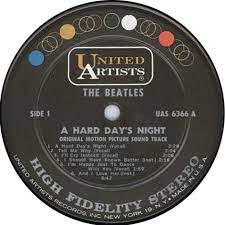 June 26th, 1964 is when US audiences got their first taste of "And I Love Her." United Artists Records rush-released their soundtrack album for "A Hard Day's Night" utilizing only the mono masters received from EMI around June 10th, 1964, this album topping the Billboard album chart for 14 weeks. To create a "High Fidelity Stereo" mix for the stereo release of the album, they transferred the mono mix of the song featuring Paul's single-tracked vocals to two seperate channels and boosted the bass frequencies on the left channel while raising the treble frequencies on the right, slightly raising the volume of George's guitar solo on the right channel to simulate the stereo effect. United Artists kept this album in print until the label was purchased by Capitol Records in 1978, Capitol beginning their reprints of this soundtrack album on August 1st, 1980. This album got its compact disc release on January 21st, 2014, both the mono and stereo versions of the album being contained on a single CD. June 26th, 1964 is when US audiences got their first taste of "And I Love Her." United Artists Records rush-released their soundtrack album for "A Hard Day's Night" utilizing only the mono masters received from EMI around June 10th, 1964, this album topping the Billboard album chart for 14 weeks. To create a "High Fidelity Stereo" mix for the stereo release of the album, they transferred the mono mix of the song featuring Paul's single-tracked vocals to two seperate channels and boosted the bass frequencies on the left channel while raising the treble frequencies on the right, slightly raising the volume of George's guitar solo on the right channel to simulate the stereo effect. United Artists kept this album in print until the label was purchased by Capitol Records in 1978, Capitol beginning their reprints of this soundtrack album on August 1st, 1980. This album got its compact disc release on January 21st, 2014, both the mono and stereo versions of the album being contained on a single CD.
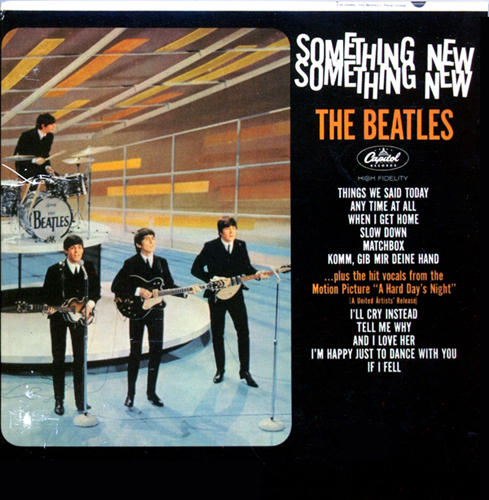 Capitol Records were hot on their heels to expose America to the song in a great way. On July 20th, they released their album "Something New" which featured four songs from the movie including "And I Love Her." The mono edition of the album included the March 3rd, 1964 mono mix that features Paul's single-tracked vocals, while the stereo edition had the standard June 22nd, 1964 stereo mix featuring Paul's double-tracked vocals. While this album did not outsell the United Artists soundtrack album, it was quite successful and peaked at #2 on the Billboard album chart directly under the UA "A Hard Day's Night" album at #1. "Something New" was eventually released on an individual compact disc on January 21st, 2014, both the mono and stereo versions being contained on one CD. Capitol Records were hot on their heels to expose America to the song in a great way. On July 20th, they released their album "Something New" which featured four songs from the movie including "And I Love Her." The mono edition of the album included the March 3rd, 1964 mono mix that features Paul's single-tracked vocals, while the stereo edition had the standard June 22nd, 1964 stereo mix featuring Paul's double-tracked vocals. While this album did not outsell the United Artists soundtrack album, it was quite successful and peaked at #2 on the Billboard album chart directly under the UA "A Hard Day's Night" album at #1. "Something New" was eventually released on an individual compact disc on January 21st, 2014, both the mono and stereo versions being contained on one CD.
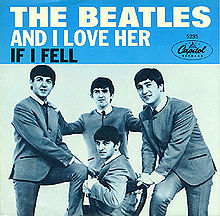 Simultaneously on July 20th, Capitol released the song as a single that featured "If I Fell" as the b-side. This single helped give other songs from the movie exposure which, in turn, meant more sales for Capitol in the long run. The primary attention on the singles charts was on their recently released single "A Hard Day's Night," but "And I Love Her" still had a very good chart response, reaching #12 on the Billboard Hot 100. Simultaneously on July 20th, Capitol released the song as a single that featured "If I Fell" as the b-side. This single helped give other songs from the movie exposure which, in turn, meant more sales for Capitol in the long run. The primary attention on the singles charts was on their recently released single "A Hard Day's Night," but "And I Love Her" still had a very good chart response, reaching #12 on the Billboard Hot 100.
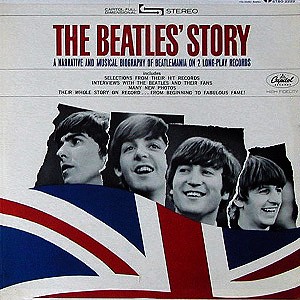 "The Beatles' Story" was a documentary-style double-album that Capitol released in time for the Christmas season on November 23rd, 1964. On the track entitled "A Hard Day's Night - Their First Movie" we hear a segment of the song "And I Love Her" to represent the success of the movie. While this is not considered an actual release of the song, this is a noteworthy mention. Surprisingly, "The Beatles' Story" was also released on compact disc on January 21st, 2014, but only as contained in the 13 album box set "The US Albums." "The Beatles' Story" was a documentary-style double-album that Capitol released in time for the Christmas season on November 23rd, 1964. On the track entitled "A Hard Day's Night - Their First Movie" we hear a segment of the song "And I Love Her" to represent the success of the movie. While this is not considered an actual release of the song, this is a noteworthy mention. Surprisingly, "The Beatles' Story" was also released on compact disc on January 21st, 2014, but only as contained in the 13 album box set "The US Albums."
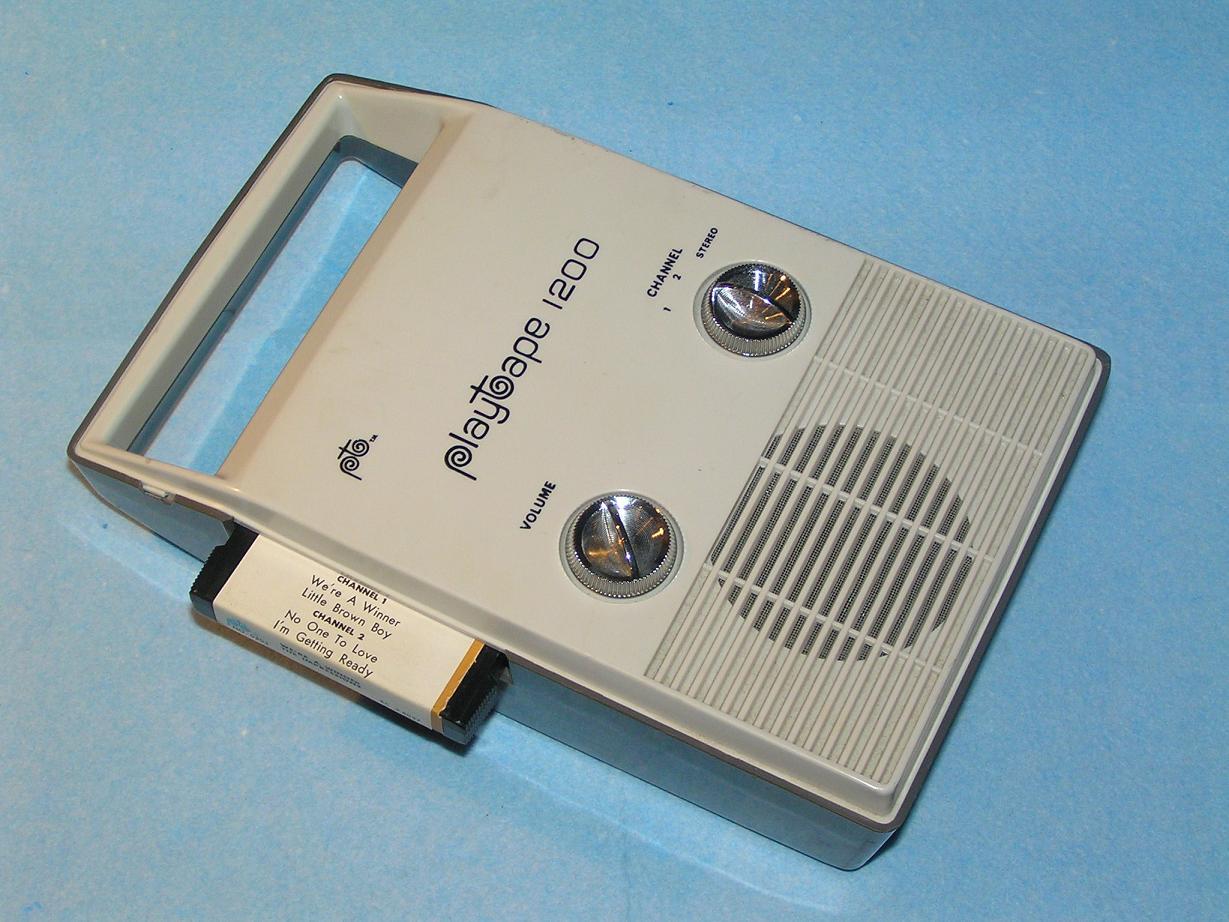 Sometime in 1967, Capitol Records released Beatles music on a brand new but short-lived format called "Playtapes." These cartridges did not allow for the capability of including entire albums, so a truncated four-song version of "Something New" was released in this portable format, "And I Love Her" being one of these songs. Around the same time, United Artists Records released an eight-song "Playtape" version of the soundtrack to "A Hard Day's Night" which also included "And I Love Her." These "Playtapes" are rare and highly collectable today. Sometime in 1967, Capitol Records released Beatles music on a brand new but short-lived format called "Playtapes." These cartridges did not allow for the capability of including entire albums, so a truncated four-song version of "Something New" was released in this portable format, "And I Love Her" being one of these songs. Around the same time, United Artists Records released an eight-song "Playtape" version of the soundtrack to "A Hard Day's Night" which also included "And I Love Her." These "Playtapes" are rare and highly collectable today.
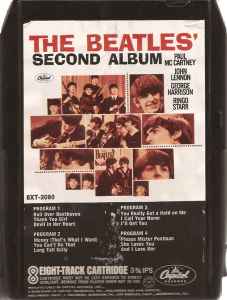 When Capitol released their 8-track rendition of the album "The Beatles' Second Album" in 1968, they added "And I Love Her" as the final track on channel four. This was done in order to flesh out the eleven songs to twelve, which could more readily be divided between the four channels of the tape. When Capitol released their 8-track rendition of the album "The Beatles' Second Album" in 1968, they added "And I Love Her" as the final track on channel four. This was done in order to flesh out the eleven songs to twelve, which could more readily be divided between the four channels of the tape.
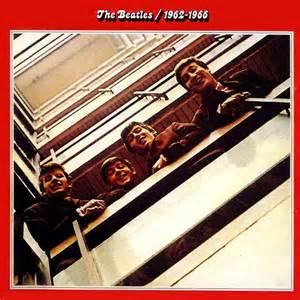 The next actual American release of this song wasn't until April 2nd, 1973 on the first "greatest hits" package entitled "The Beatles/1962-1966" (aka "The Red Album"). This very successful album spent eight weeks in the Top 10 of the US Billboard album chart, peaking at #3. The stereo mix of "And I Love Her" was included on this album as with the compact disc release on September 20th, 1993. The re-release of the CD set on October 19th, 2010 features a remastered stereo mix of the song, as did the vinyl edition released on October 31st, 2014. The next actual American release of this song wasn't until April 2nd, 1973 on the first "greatest hits" package entitled "The Beatles/1962-1966" (aka "The Red Album"). This very successful album spent eight weeks in the Top 10 of the US Billboard album chart, peaking at #3. The stereo mix of "And I Love Her" was included on this album as with the compact disc release on September 20th, 1993. The re-release of the CD set on October 19th, 2010 features a remastered stereo mix of the song, as did the vinyl edition released on October 31st, 2014.
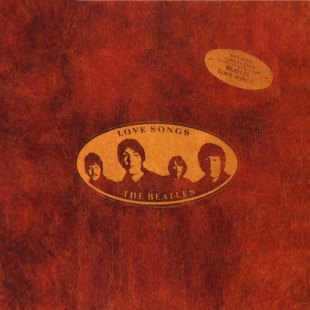 This didn't stop Capitol from having the song in yet another compilation album they wanted to spring on American record buyers. On November 21st, 1977 they released an album of Beatles ballads entitled "Love Songs," which didn't do quite as well but nonetheless peaked at #24 on the Billboard album chart and ended up selling three million units. This didn't stop Capitol from having the song in yet another compilation album they wanted to spring on American record buyers. On November 21st, 1977 they released an album of Beatles ballads entitled "Love Songs," which didn't do quite as well but nonetheless peaked at #24 on the Billboard album chart and ended up selling three million units.
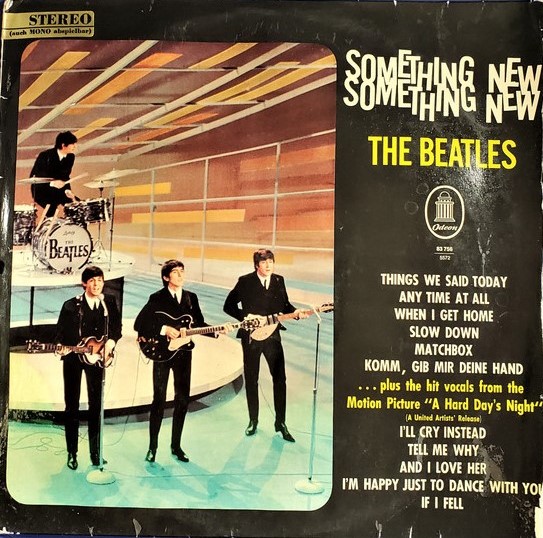 As mentioned above, Capitol was then motivated by the British release of an album of Beatles rarities to release one of their own in America. The US "Rarities" album, released on March 24th, 1980, included "And I Love Her" from the German release of the LP "Something New" that contained a couple of skillfully edited extra measures at the conclusion of the song. The implication presented was that this was how the song was recorded, but in actuality these extra measures were edited on for this German release for some reason, creating a unique but artificial "rarity." As mentioned above, Capitol was then motivated by the British release of an album of Beatles rarities to release one of their own in America. The US "Rarities" album, released on March 24th, 1980, included "And I Love Her" from the German release of the LP "Something New" that contained a couple of skillfully edited extra measures at the conclusion of the song. The implication presented was that this was how the song was recorded, but in actuality these extra measures were edited on for this German release for some reason, creating a unique but artificial "rarity."
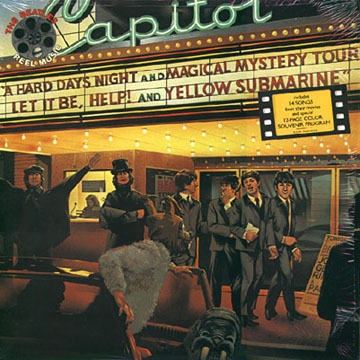 In order to bring in even more Beatles sales, Capitol Records thought of one more compilation idea. An LP called "Reel Music" was released on March 22nd, 1982 which contained highlights from all five Beatles movies (including "Magical Mystery Tour"). "And I Love Her" was one of four selections from the "A Hard Day's Night" film to make this compilation album, which performed quite well by peaking at #19 on the US Billboard album chart. Over 12,000 promotional copies were also printed, these being on translucent gold vinyl. In order to bring in even more Beatles sales, Capitol Records thought of one more compilation idea. An LP called "Reel Music" was released on March 22nd, 1982 which contained highlights from all five Beatles movies (including "Magical Mystery Tour"). "And I Love Her" was one of four selections from the "A Hard Day's Night" film to make this compilation album, which performed quite well by peaking at #19 on the US Billboard album chart. Over 12,000 promotional copies were also printed, these being on translucent gold vinyl.
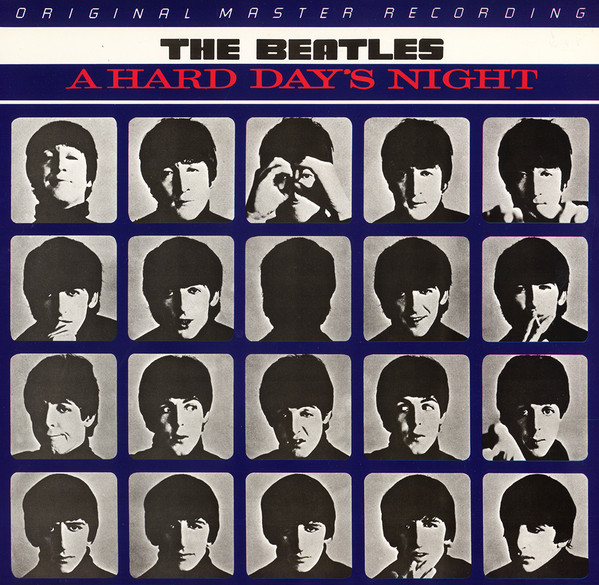 The first time the original UK "A Hard Day's Night" album was made available in the US was on the "Original Master Recording" vinyl edition released through Mobile Fidelity Sound Lab in February of 1987. This album included "And I Love Her" and was created by utilizing half-speed mastering technology from the original master tape on loan from EMI. This version of the LP was only available for a short time and is rare and quite collectible today. The first time the original UK "A Hard Day's Night" album was made available in the US was on the "Original Master Recording" vinyl edition released through Mobile Fidelity Sound Lab in February of 1987. This album included "And I Love Her" and was created by utilizing half-speed mastering technology from the original master tape on loan from EMI. This version of the LP was only available for a short time and is rare and quite collectible today.
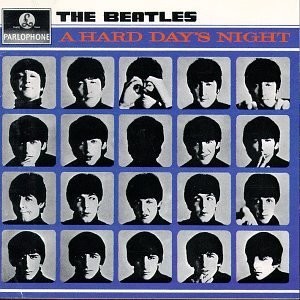 February 26th, 1987 was the date that the standard "A Hard Day's Night" album was released in the US. This was the debut of the album on CD, which featured the original British mono mix, this also being released on vinyl in America on July 21st, 1987. The stereo edition was released on September 9th, 2009 for the remastered compact disc, the vinyl version released on November 13th, 2012. February 26th, 1987 was the date that the standard "A Hard Day's Night" album was released in the US. This was the debut of the album on CD, which featured the original British mono mix, this also being released on vinyl in America on July 21st, 1987. The stereo edition was released on September 9th, 2009 for the remastered compact disc, the vinyl version released on November 13th, 2012.
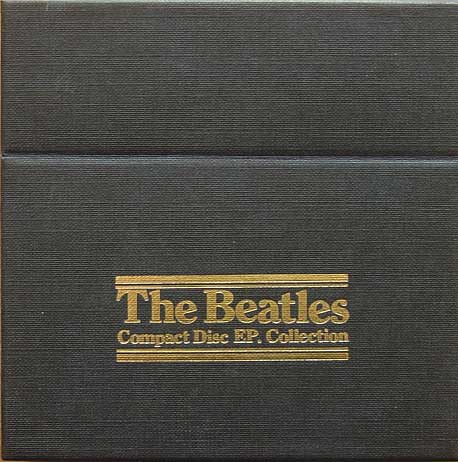 On June 30th, 1992, Capitol released a box set entitled "Compact Disc EP Collection" which contained the mono mix of "And I Love Her" because of its inclusion on the original British EP "Extracts From The Film A Hard Day's Night." On June 30th, 1992, Capitol released a box set entitled "Compact Disc EP Collection" which contained the mono mix of "And I Love Her" because of its inclusion on the original British EP "Extracts From The Film A Hard Day's Night."
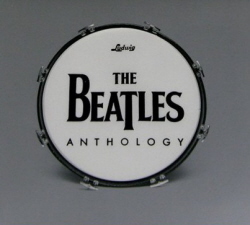 The highly anticipated "Anthology 1" album was released back on November 21st, 1995 by Apple Records. Beatles' enthusiasts were all surprised to hear the only complete take of this song ("take two") which was recorded on their first attempt at its recording on February 25th, 1964. It revealed how different the song originally sounded as well as showing that a good song can be done many different ways and still work well. This track was definitely a highlight on this very successful #1 album. A sampler disc of this album was also distributed to US radio stations just before its release. This single disc also contains this version of "And I Love Her." The highly anticipated "Anthology 1" album was released back on November 21st, 1995 by Apple Records. Beatles' enthusiasts were all surprised to hear the only complete take of this song ("take two") which was recorded on their first attempt at its recording on February 25th, 1964. It revealed how different the song originally sounded as well as showing that a good song can be done many different ways and still work well. This track was definitely a highlight on this very successful #1 album. A sampler disc of this album was also distributed to US radio stations just before its release. This single disc also contains this version of "And I Love Her."
 The CD box set "The Capitol Albums, Vol. 1," which was released on November 15th, 2009, contains the song in both stereo and mono as originally heard on the album "Something New." The CD box set "The Capitol Albums, Vol. 1," which was released on November 15th, 2009, contains the song in both stereo and mono as originally heard on the album "Something New."
The remastered mono mix of "And I Love Her" was featured in the September 9th, 2009 released CD box set "The Beatles In Mono," the vinyl edition being released on September 9th, 2014.
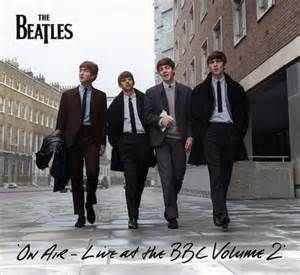 On November 11th, 2013, the album "On Air - Live At The BBC Volume 2" was released, which featured yet another rendition of the song as recorded on July 14th, 1964 for the radio program "Top Gear." This recording is noteworthy for its more conventional instrumentation of George on electric guitar and Ringo on his standard drum kit. Paul's vocals were double-tracked throughout on this recording, him even changing the lyrics slightly in the second verse from "she gives me everything" to "she brings me everything." Subtle but noticeable. Also released around this date was a fourteen-track sampler of the above album for promotional purposes, “And I Love Her” being included therein. On November 11th, 2013, the album "On Air - Live At The BBC Volume 2" was released, which featured yet another rendition of the song as recorded on July 14th, 1964 for the radio program "Top Gear." This recording is noteworthy for its more conventional instrumentation of George on electric guitar and Ringo on his standard drum kit. Paul's vocals were double-tracked throughout on this recording, him even changing the lyrics slightly in the second verse from "she gives me everything" to "she brings me everything." Subtle but noticeable. Also released around this date was a fourteen-track sampler of the above album for promotional purposes, “And I Love Her” being included therein.
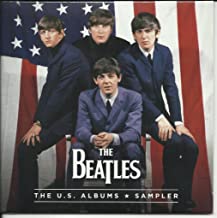 In promotion of the current 2014 box set "The US Albums," a 25-song sampler CD was made for limited release on January 21st, 2014, this containing the original March 3rd, 1964 mono mix of "And I Love Her." In promotion of the current 2014 box set "The US Albums," a 25-song sampler CD was made for limited release on January 21st, 2014, this containing the original March 3rd, 1964 mono mix of "And I Love Her."
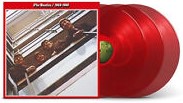 A 50th Anniversay edition of the "The Beatles / 1962 - 1966" set ("The Red Album") was released on November 10th, 2023. This newly expanded release included 12 additional songs for a total of 38 tracks, including the new mix of "And I Love Her" detailed above, and was made available as a double CD and also as a triple vinyl release for collectors on both black and red vinyl. A 50th Anniversay edition of the "The Beatles / 1962 - 1966" set ("The Red Album") was released on November 10th, 2023. This newly expanded release included 12 additional songs for a total of 38 tracks, including the new mix of "And I Love Her" detailed above, and was made available as a double CD and also as a triple vinyl release for collectors on both black and red vinyl.
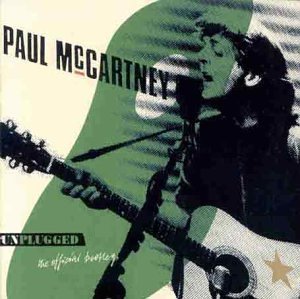 Not to be forgotten is Paul McCartney's "Unplugged (The Official Bootleg)" album that was released on May 20th, 1991. This stripped-down performance made for the "MTV Unplugged" series featured "And I Love Her," which was the first time he performed the song anywhere outside of The Beatles. This limited edition album did very well in the US, peaking at #14 on the US Billboard album chart. Not to be forgotten is Paul McCartney's "Unplugged (The Official Bootleg)" album that was released on May 20th, 1991. This stripped-down performance made for the "MTV Unplugged" series featured "And I Love Her," which was the first time he performed the song anywhere outside of The Beatles. This limited edition album did very well in the US, peaking at #14 on the US Billboard album chart.
Live Performances
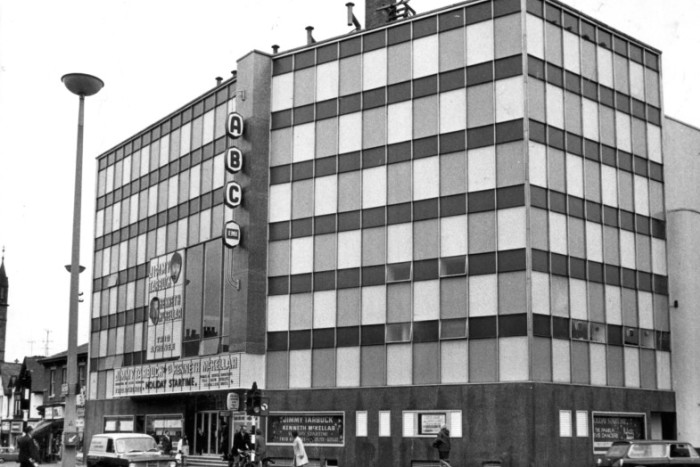 "And I Love Her" had an extremely short performance life for The Beatles. After one BBC radio recording and broadcast (detailed above under "Recording History"), the band performed it on the live variety BBC TV show "Blackpool Night Out" on July 19th, 1964 at the ABC Theatre in Blackpool. Other than its appearance in the movie "A Hard Day's Night," this was the full extent to which the Beatles promoted "And I Love Her." Not that it needed it anyway, because its popularity gave it a spot in their hugely successful 'greatest hits' package "The Beatles/1962-1966." "And I Love Her" had an extremely short performance life for The Beatles. After one BBC radio recording and broadcast (detailed above under "Recording History"), the band performed it on the live variety BBC TV show "Blackpool Night Out" on July 19th, 1964 at the ABC Theatre in Blackpool. Other than its appearance in the movie "A Hard Day's Night," this was the full extent to which the Beatles promoted "And I Love Her." Not that it needed it anyway, because its popularity gave it a spot in their hugely successful 'greatest hits' package "The Beatles/1962-1966."
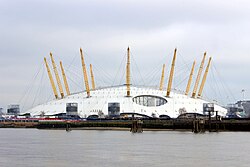 Paul also thought to periodically perform the song live during his solo career. As indicated above, he performed it on his segment for "MTV's Unplugged," which was recorded on January 25th, 1991, and then again during his brief "Unplugged Tour" from that year, which began on May 8th and concluded on July 24th. McCartney included the song in his "New World Tour" of 1993, but he only featured it in the first four shows of this tour (February 18th through 23rd). His December 2009 "Good Evening Europe Tour" also featured the song, which stretched from December 2nd through the 22nd (at the O2 Arena in London), as well as periodically during his extensive "Up And Coming Tour," which began on March 28th, 2010 and finished on June 10th, 2011. Then, his "Out There!" tour, which began on May 4th, 2013 and concluded on October 22nd, 2015, included the song throughout the entire tour, as did his "One On One" tour, which stretched from April 13th, 2016 to December 16th, 2017. Paul also thought to periodically perform the song live during his solo career. As indicated above, he performed it on his segment for "MTV's Unplugged," which was recorded on January 25th, 1991, and then again during his brief "Unplugged Tour" from that year, which began on May 8th and concluded on July 24th. McCartney included the song in his "New World Tour" of 1993, but he only featured it in the first four shows of this tour (February 18th through 23rd). His December 2009 "Good Evening Europe Tour" also featured the song, which stretched from December 2nd through the 22nd (at the O2 Arena in London), as well as periodically during his extensive "Up And Coming Tour," which began on March 28th, 2010 and finished on June 10th, 2011. Then, his "Out There!" tour, which began on May 4th, 2013 and concluded on October 22nd, 2015, included the song throughout the entire tour, as did his "One On One" tour, which stretched from April 13th, 2016 to December 16th, 2017.
Conclusion
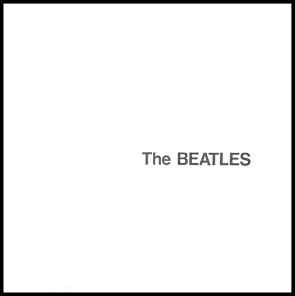 This simple but stirring and gentle ballad shows for the first time the variance of what Lennon and McCartney could conjure up within the confines of a single album. They would be later known for their "highs and lows," "peaks and valleys" on their albums, such as the range of genres on the "White Album" (from "Helter Skelter" to "Blackbird" to "Honey Pie"). While the gentleness of "A Taste Of Honey" and "Till There Was You" from their first two albums were examples of this, they resorted to cover songs to display the variance. With "And I Love Her" they display that they have this capability right in their own arsenal. This simple but stirring and gentle ballad shows for the first time the variance of what Lennon and McCartney could conjure up within the confines of a single album. They would be later known for their "highs and lows," "peaks and valleys" on their albums, such as the range of genres on the "White Album" (from "Helter Skelter" to "Blackbird" to "Honey Pie"). While the gentleness of "A Taste Of Honey" and "Till There Was You" from their first two albums were examples of this, they resorted to cover songs to display the variance. With "And I Love Her" they display that they have this capability right in their own arsenal.
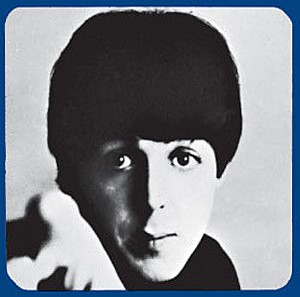 At any rate, so begins the magic of the stereotypical McCartney ballad. Paul's balance between melody and lyrics reveals this tune to be among the best he will ever write, and one that he rightfully has remained proud of throughout his life. At any rate, so begins the magic of the stereotypical McCartney ballad. Paul's balance between melody and lyrics reveals this tune to be among the best he will ever write, and one that he rightfully has remained proud of throughout his life.
Song Summary
"And I Love Her"
Written by: John Lennon / Paul McCartney
-
Song Written: February 1964
-
Song Recorded: February 27, 1964
-
First US Release Date: June 26, 1964
-
-
US Single Release: Capitol #5235
-
Highest Chart Position: #12
-
-
Length: 2:31
-
Key: E major
-
Producer: George Martin
-
Engineers: Norman Smith, Richard Langham
Instrumentation (most likely):
-
Paul McCartney - Lead Vocals, Bass Guitar (1963 Hofner 500/1)
-
John Lennon - Rhythm Guitar (1962 Gibson J160E)
-
George Harrison - Lead Guitar (1950 Jose Ramirez Guitarra de Estudio),Claves (?)
-
Ringo Starr - Bongos, Claves(?)
Written and compiled by Dave Rybaczewski
|
IF YOU WOULD LIKE TO MAKE A DONATION TO KEEP THIS WEBSITE UP AND RUNNING, PLEASE CLICK BELOW!
|